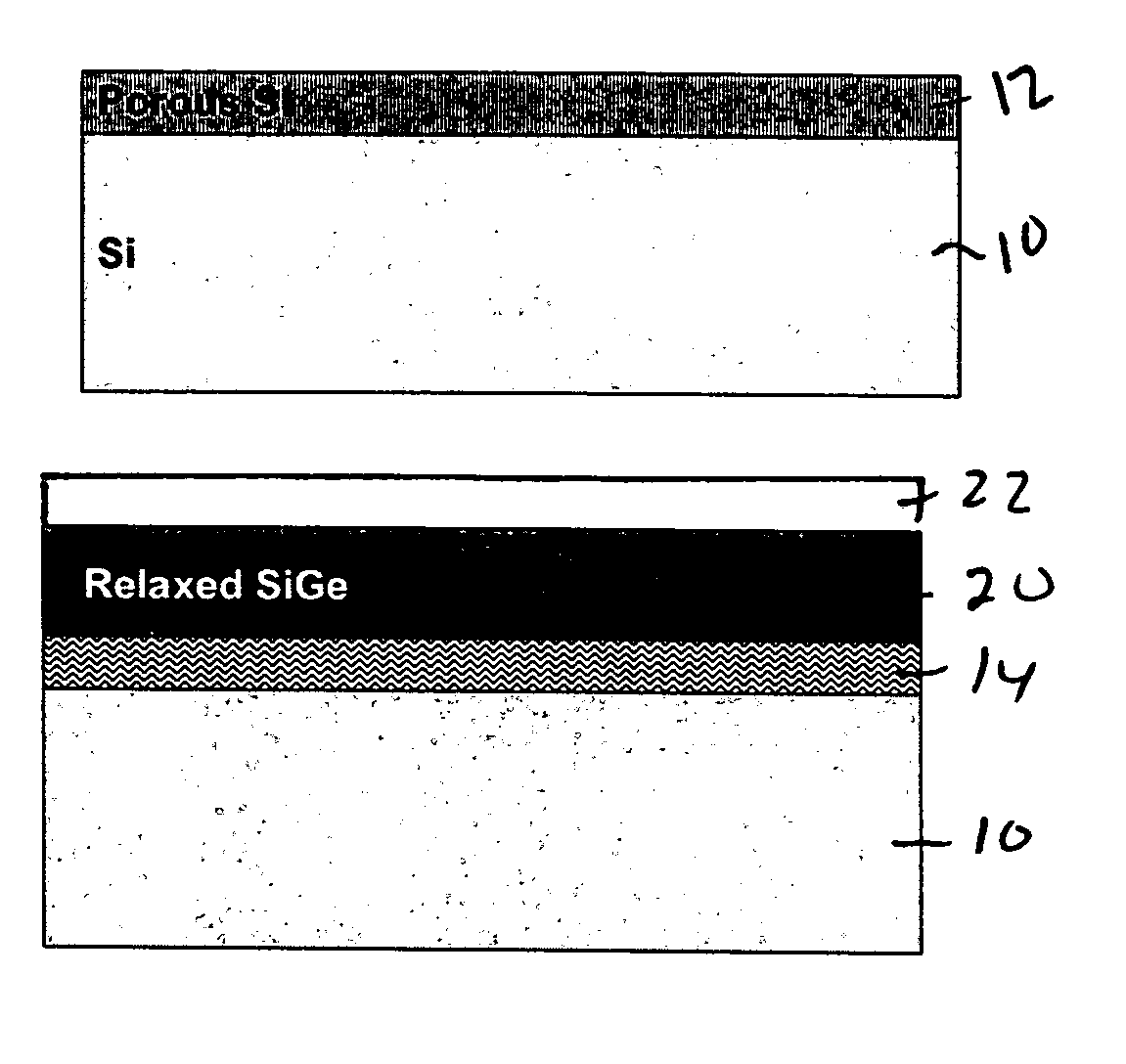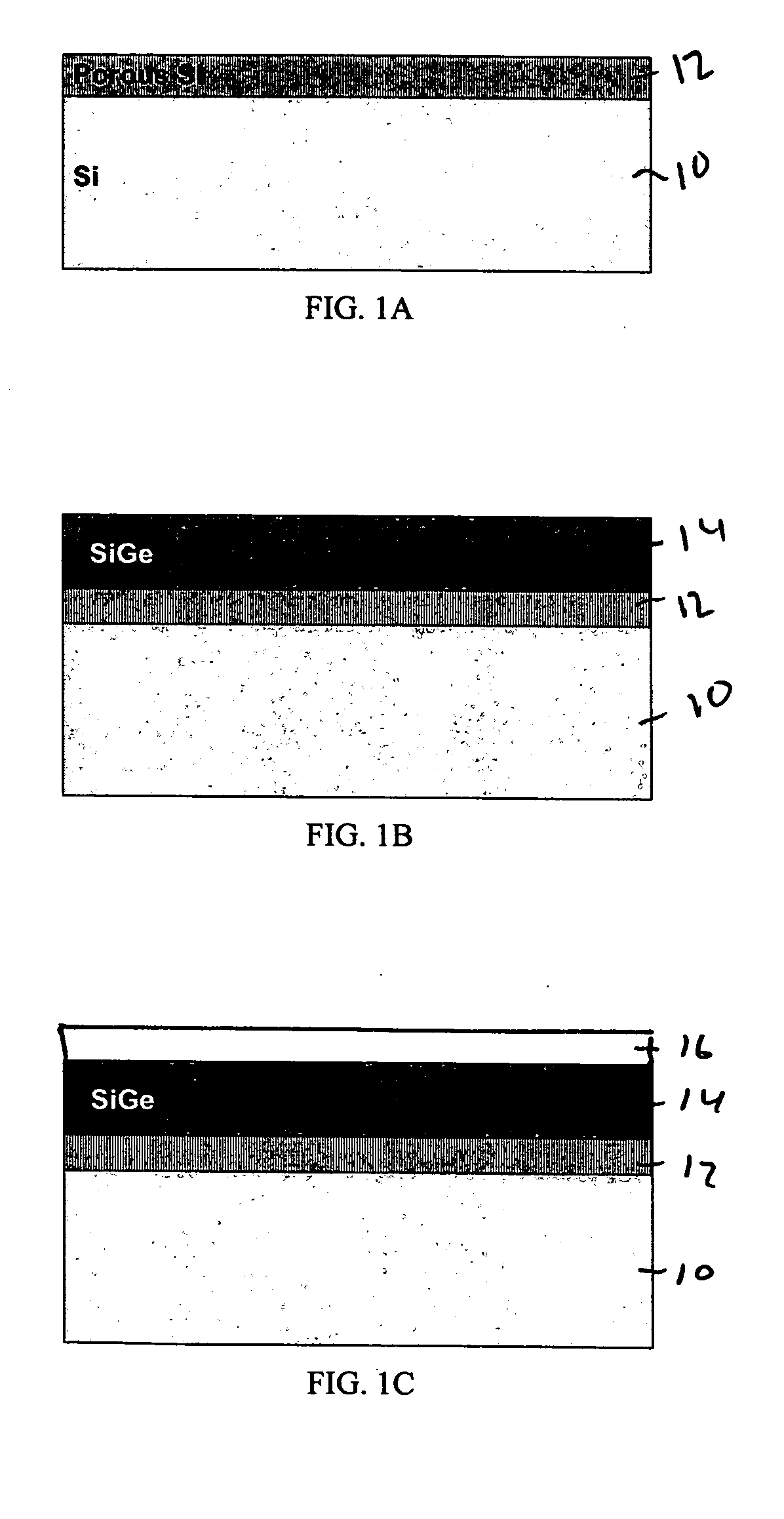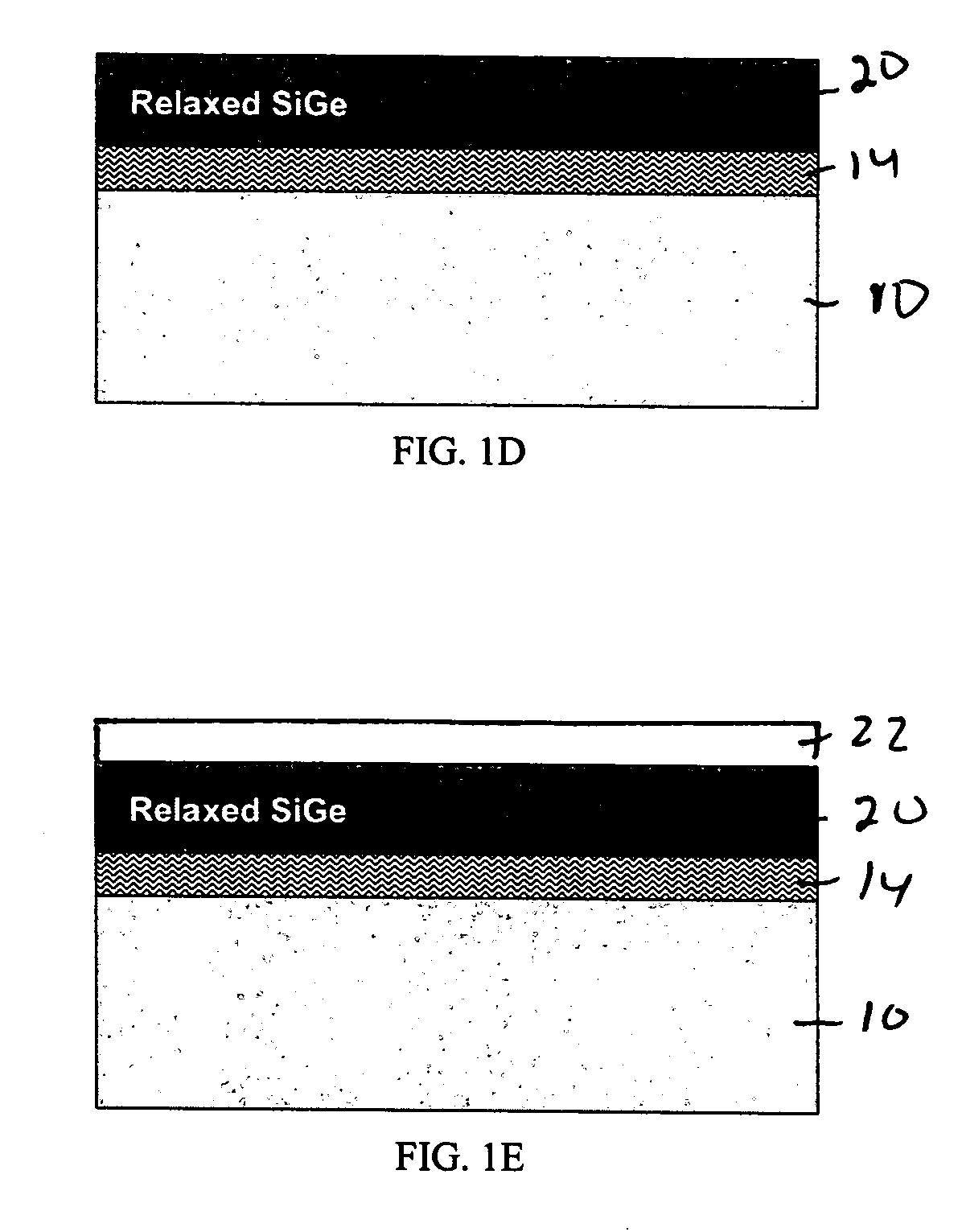Method of forming high-quality relaxed SiGe alloy layers on bulk Si substrates
a technology of relaxed sige alloy and bulk si substrate, which is applied in the direction of semiconductor devices, crystal growth processes, chemistry apparatus and processes, etc., can solve the problems of increasing the cost of the substrate, large barrier to industrial acceptance, etc., and achieve the effect of increasing the relaxation of the sige alloy layer
- Summary
- Abstract
- Description
- Claims
- Application Information
AI Technical Summary
Benefits of technology
Problems solved by technology
Method used
Image
Examples
Embodiment Construction
[0017] The present invention, which provides a method of forming a high-quality relaxed SiGe alloy layer on a bulk Si-containing substrate, will now be described in greater detail by referring to the drawings that accompany the present application.
[0018] Reference is first made to FIGS. 1A-1E which illustrate the basic processing steps that are employed in the present invention. FIG. 1A shows a structure during the initial stage of the present invention in which a porous Si-containing layer 12 is formed at, or near, a surface layer of a bulk Si-containing substrate 10.
[0019] The term “Si-containing” is used throughout the present application to denote a semiconductor material that includes at least silicon. Illustrative examples of such Si-containing materials include, but are not limited to: Si, SiGe, SiC, SiGeC, Si / Si, Si / SiC, and Si / SiGeC. The bulk Si-containing substrate 10 used in the present invention may be undoped or it may be an electron-rich or hole-rich Si-containing su...
PUM
 Login to View More
Login to View More Abstract
Description
Claims
Application Information
 Login to View More
Login to View More - R&D
- Intellectual Property
- Life Sciences
- Materials
- Tech Scout
- Unparalleled Data Quality
- Higher Quality Content
- 60% Fewer Hallucinations
Browse by: Latest US Patents, China's latest patents, Technical Efficacy Thesaurus, Application Domain, Technology Topic, Popular Technical Reports.
© 2025 PatSnap. All rights reserved.Legal|Privacy policy|Modern Slavery Act Transparency Statement|Sitemap|About US| Contact US: help@patsnap.com



